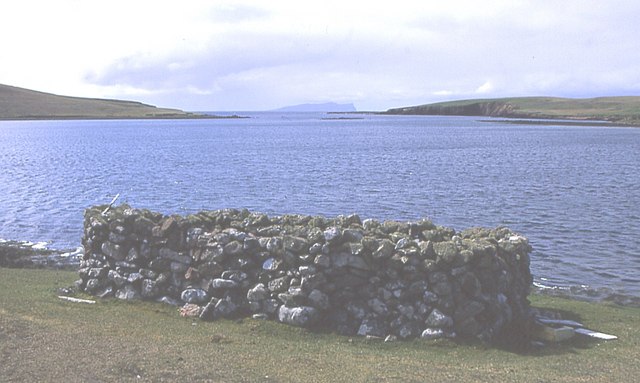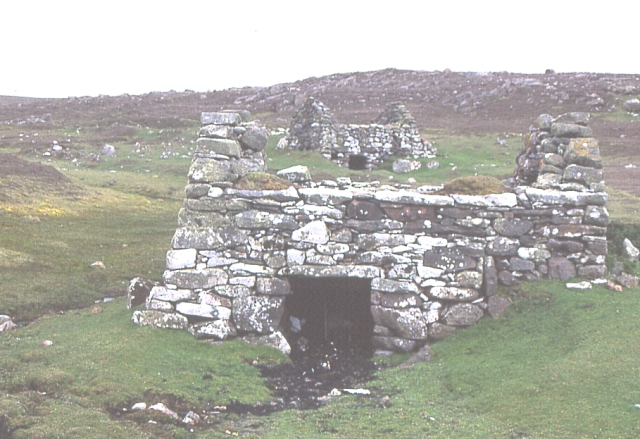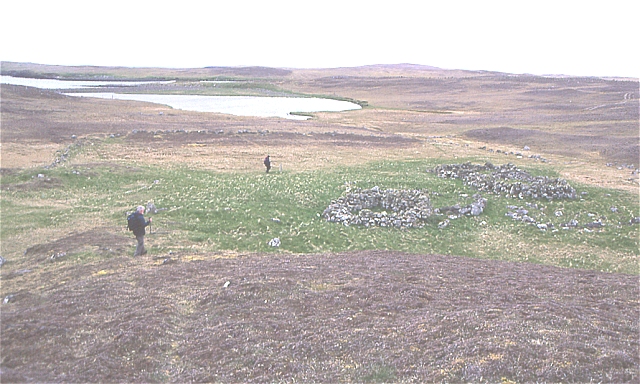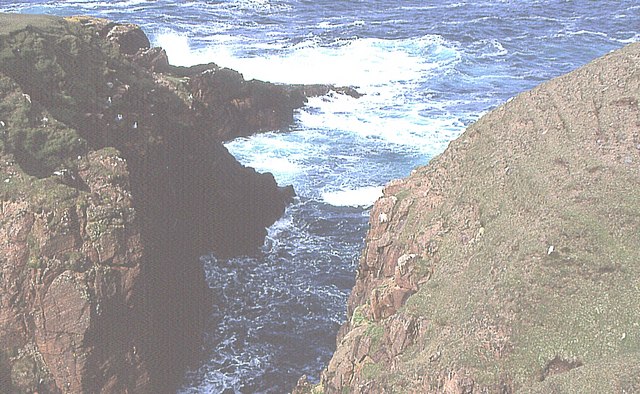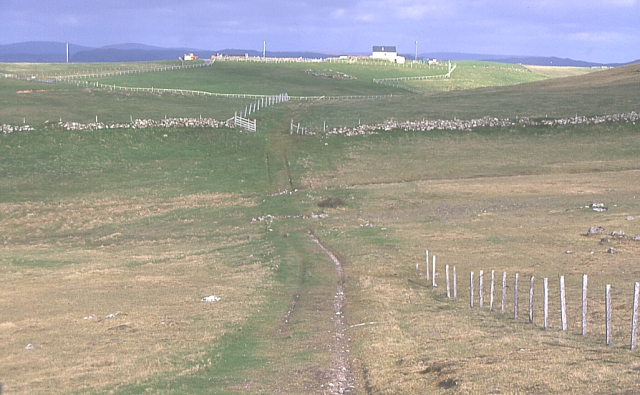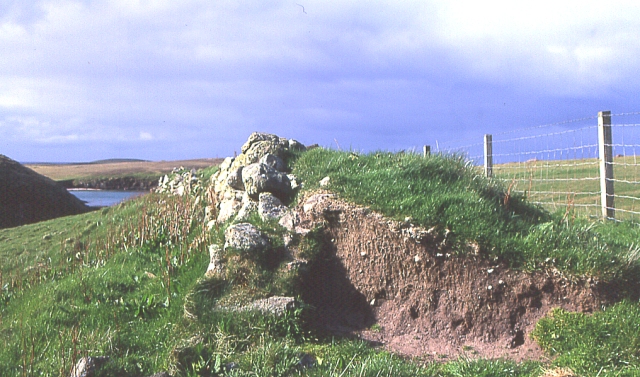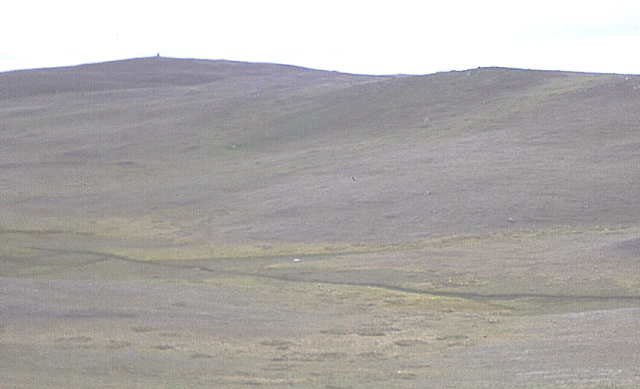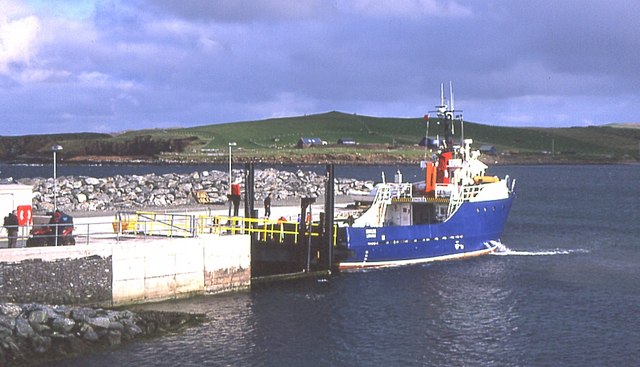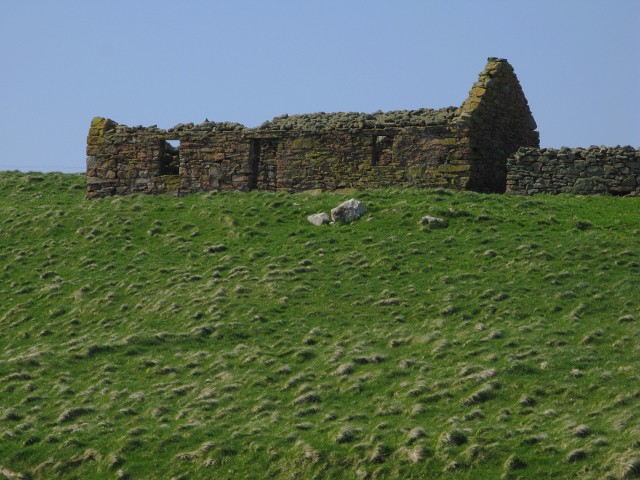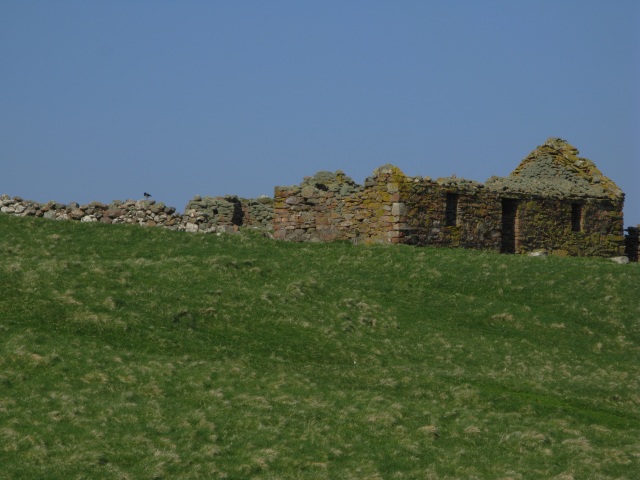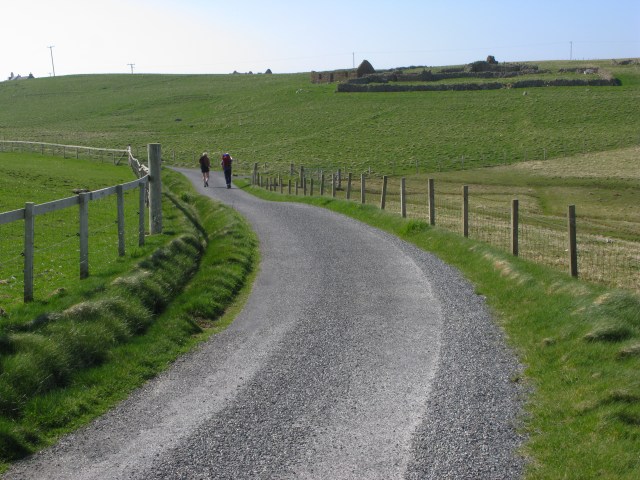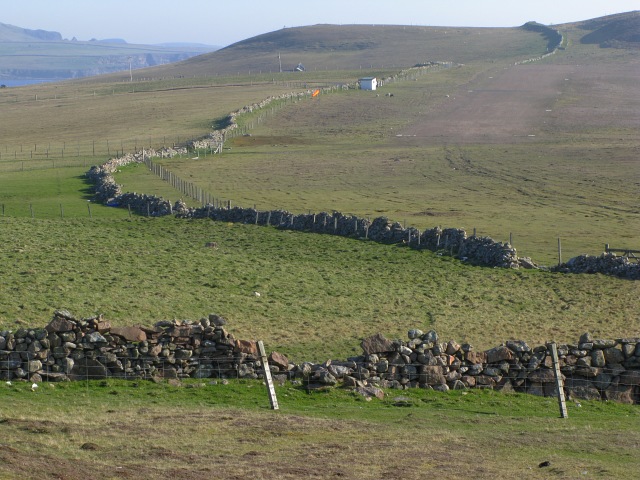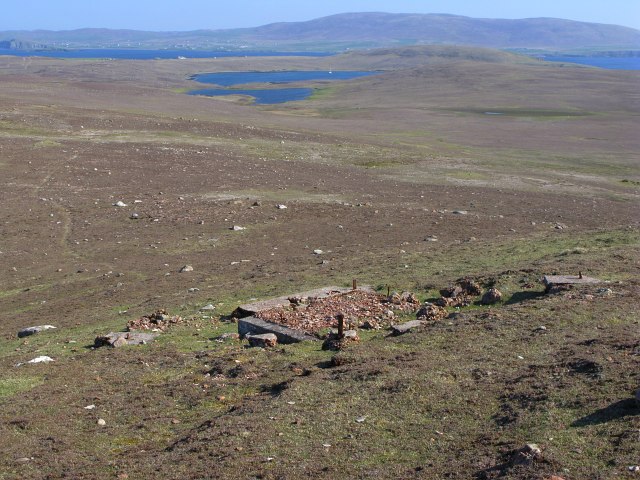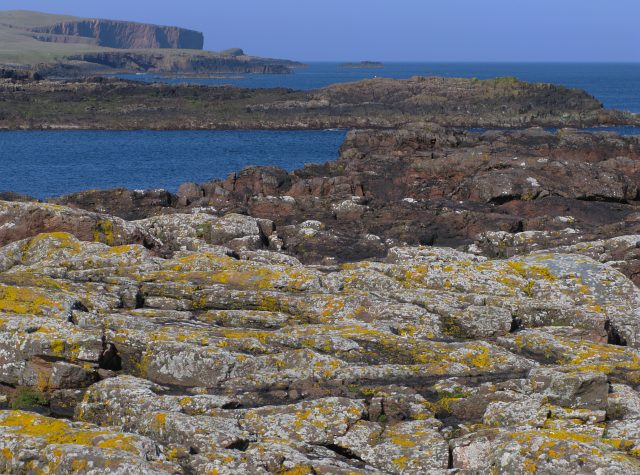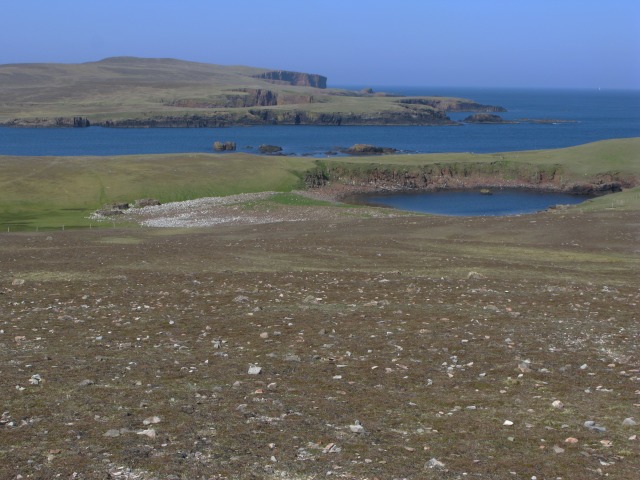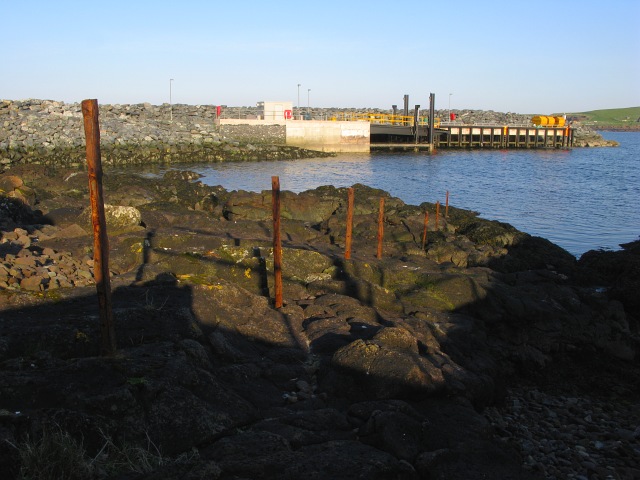Sae Geo
Coastal Feature, Headland, Point in Shetland
Scotland
Sae Geo
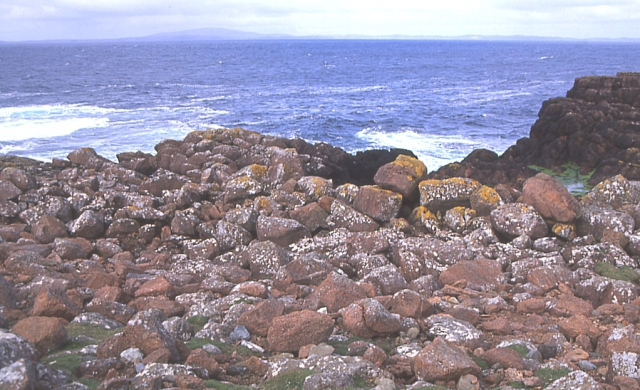
Sae Geo is a prominent coastal feature located on the rugged coastline of the Shetland Islands, an archipelago in Scotland. It is a headland that stretches out into the North Sea, forming a distinct point along the shoreline. Sae Geo is situated on the western coast of the main island, known as Mainland, and is surrounded by steep cliffs and rocky outcrops.
The name "Sae Geo" is derived from Old Norse, reflecting the strong Norse influence in the region's history. "Sae" means sea, while "Geo" refers to a narrow inlet or cove. This name accurately describes the geographical characteristics of the area.
The headland is characterized by its dramatic landscape, with sheer cliffs rising from the sea below. The rugged terrain is a result of ongoing erosion processes, shaped by the relentless pounding of the North Sea waves against the coastline over centuries. The base of Sae Geo is strewn with large boulders and rocky debris, evidence of the constant erosion and weathering of the cliffs.
Due to its exposed location, Sae Geo is subject to strong winds and powerful ocean currents, making it an awe-inspiring sight. The headland offers stunning panoramic views of the surrounding coastline, with the wild and untamed beauty of the North Sea stretching out to the horizon.
Sae Geo is a popular spot for nature enthusiasts, hikers, and photographers who are drawn to its dramatic scenery. It serves as a reminder of both the powerful forces of nature and the unique geographical features that can be found along the Shetland coastline.
If you have any feedback on the listing, please let us know in the comments section below.
Sae Geo Images
Images are sourced within 2km of 60.338786/-1.6899235 or Grid Reference HU1761. Thanks to Geograph Open Source API. All images are credited.
Sae Geo is located at Grid Ref: HU1761 (Lat: 60.338786, Lng: -1.6899235)
Unitary Authority: Shetland Islands
Police Authority: Highlands and Islands
What 3 Words
///strict.birthing.workflow. Near Walls, Shetland Islands
Nearby Locations
Related Wikis
Papa Stour
Papa Stour (Scots: Papa Stour) is one of the Shetland Islands in Scotland, with a population of under fifteen people, some of whom immigrated after an...
Biggings
Biggings is a village on the island of Papa Stour, in Shetland, Scotland. Papa Stour's church is situated at the south of Biggings. A homestead of Duke...
Maiden Stack
The Maiden Stack or Frau Stack is a tiny stack in the western Shetland Islands to the north of Brei Holm and east of Housa Voe in Papa Stour. It is so...
Brei Holm
Brei Holm is a tiny tidal islet in the western Shetland Islands. It is due east of Papa Stour, to which it is connected at low tide, just outside Housa...
Have you been to Sae Geo?
Leave your review of Sae Geo below (or comments, questions and feedback).
